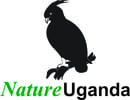Support to the sustainable use of water and wetland resources

In addition to water conservation, there is also a need to promote the sustainable use of wetland resources. Wetlands are critical ecosystems that provide many essential services, such as water purification, flood control, and wildlife habitat. However, these ecosystems are under threat due to human activities such as drainage, filling, and conversion to agricultural land. To support the sustainable use of wetlands, flower farms, and neighbouring communities can work together to implement wetland conservation measures such as reforestation, restoration of degraded wetlands, and promoting the use of sustainable practices in agriculture. By doing so, they can help protect these vital ecosystems while also promoting sustainable economic development.
Between July 2022 and March 2023, NatureUganda implemented a project titled “Support to the sustainable use of water and wetland resources for Flower farms and neighbouring communities in Greater Kampala Metropolitan area” with funding from GIZ. The project was implemented in Semagimbi Wetland, Kiringente sub-county in Mpigi District. Overall, the project aimed at promoting sustainable and wise use of water and wetland resources around Semagimbi Wetland. Specifically, the project ensured that,
- Water and wetlands resources use and managed sustainably
- Undertake mobilization and sensitization campaign on sustainable use and conservation of wetland and water resources
The project successfully conducted Semagimbi Wetland inventory on biodiversity and on economic valuation of the wetland. During the biodiversity assessments, it was discovered that Semagimbi Wetland supports at least ninety five bird species (95), nineteen (19) mammals (eight small mammals and eleven large mammals), twenty (20) amphibians, eleven (11) reptiles, seventy one (71) Butterflies, thirty eight (38) Dragonflies and two hundred twenty eight (228) plant species. On the other hand, the economic valuation study evaluated the wetland to be worth Ushs. 72,635,566,534/- per year in terms of use and non-use values within the wetland. Information from these inventories was critical for the development of the Management plan for Semagimbi Wetland.
In conclusion, by adopting water conservation practices and promoting wetland conservation measures, we can ensure the long-term sustainability of these resources while simultaneously promoting economic growth and development.
Related Posts
Recent Posts
NatureUganda hosts nature walk to promote conservation and tourism in Bugoma CFR
Site Profiling of Mabamba Bay and Musambwa Islands: Opportunities for Biodiversity Conservation and Climate Resilience
Greater Painted-snipe – When Females Take the Lead
All Categories
- Conservation and Development (35)
- Eco-tourism (6)
- Education and Awareness (14)
- Forests (12)
- Gorvenance (1)
- Habitats (13)
- membership (2)
- Nature walk (3)
- People (10)
- Projects (13)
- Public dialogue (9)
- Research and Monitoring (22)
- Sites (6)
- Species (13)
- Wetlands (15)
- Wildlife (10)




